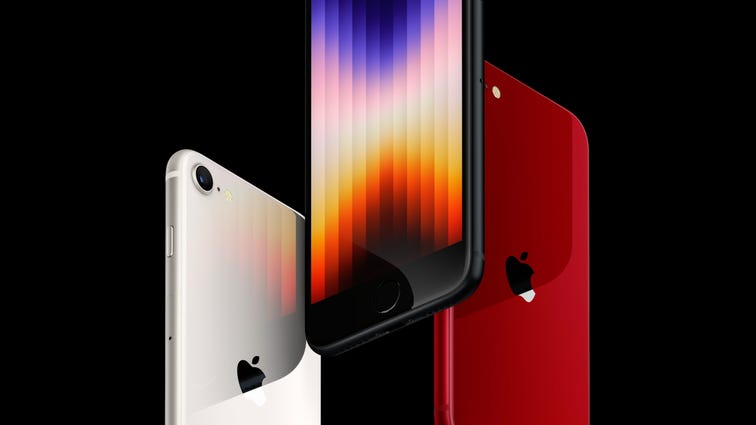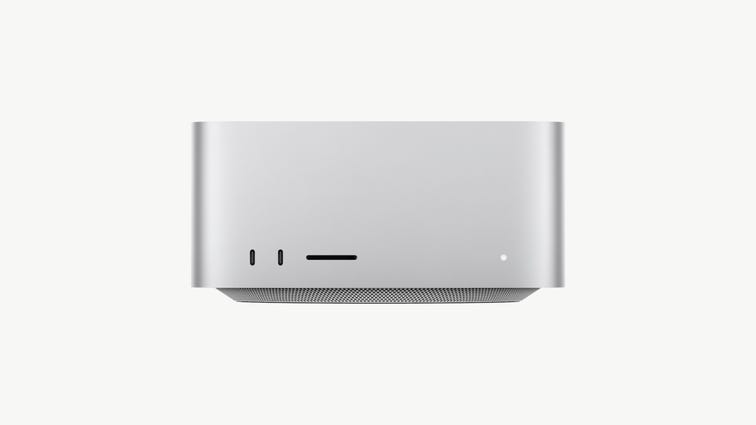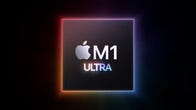
The Mac Studio Display with its Mac Studio desktop counterpart.
Apple
April showers bring May flowers. But before that, March brings the Apples. This week, the company used its first launch event of 2022 to unveil an updated iPhone SE, the small but powerful Mac Studio, the Mac Studio Display and an upgraded iPad Air. If you missed the event on Tuesday, you can relive the magic through our live blog.
There were a few short announcements before Apple showed off its products. We learned that Apple TV Plus will add new shows and movies, including MLB Friday Night Baseball with two live games. And the iPhone 13 and iPhone 13 Pro will each be available in a new variant of green.
Apple
Apple has upgraded the iPhone SE to use the A15 Bionic, the same chip that’s in the iPhone 13, as well as 5G. It retains the home button and Touch ID, and has better battery life and an improved camera system thanks to the more powerful computational capabilities offered by the chip. It starts at $429 (£419, AU$719), $30 more than before. Preorders start Friday and it ships on March 18.
Read more: Apple Announces a New iPhone SE With A15 Bionic Chip
Apple
The all-new iPad Air is the first upgrade to the Air lineup since 2020, which brings Apple’s powerful M1 chip, a 12-megapixel ultrawide camera on the front, 5G connectivity and more, all in a similar design to the fourth-gen iPad Air.
Pricing for the new iPad Air starts at $599 and preorders start on March 11.
Read more: The iPad Air Gets an Overdue Upgrade
Apple/Screenshot by Jared DiPane/CNET
M1 Max has a die-to-die interconnect, which lets Apple link two of them to create the Ultra, giving it basically double servings of everything — processor and GPU cores and so on. It uses high-bandwidth memory and supports up to 128GB, but combined it takes less power than two separate chips.
The chip debuts in the new Mac Studio, a computer that looks like a double-height Mac Mini, though the base configuration comes with the M1 Max. Apple has positioned its performance as equal to or better than the Mac Pro, making it what sounds like a great option for the bulk of creators who really don’t need the expandability of the Mac Pro.
The new Mac Studio is full of venting and a big cooling system, has six Thunderbolt 4 ports and can drive up to four Pro XDR monitors. It’ll cost you $1,999 (£1,999, AU$2,499) to start or $3,999 (£3,999, AU$6,099) for the version with Apple’s new M1 Ultra chip. You can order it today and it ships starting March 18.
Apple also hinted that there’s a Mac Pro upgrade coming, “but that’s for another day.”
Apple
The 27-inch 5K Retina display has the same iPad-like profile as the 24-inch iMac. It incorporates an A13 Bionic chip, the same one as in the entry-level iPad, so it can process iPad-like features such as Center Stage via the built-in 12-megapixel webcam, plus multiple mics, six speakers and four USB-C ports, one of which is Thunderbolt. If you want a stand that can raise and lower it or the good antireflective Nano surface screen, it’ll cost you extra. The base price is $1,599 (£1,499, AU$2,499) and you can order it now, available starting March 18.
Read more: Apple Debuts Mac Studio Display Monitor Starting at $1,599












